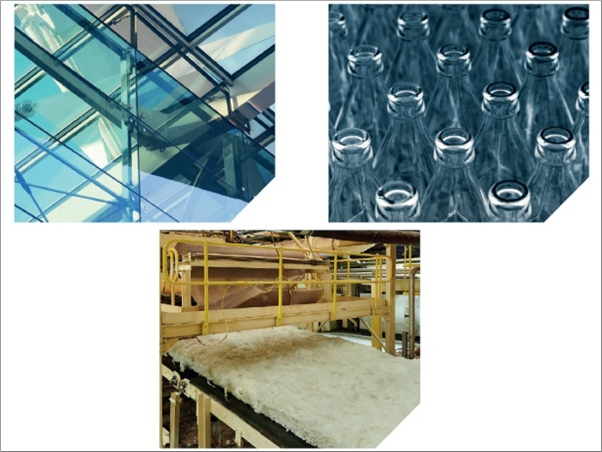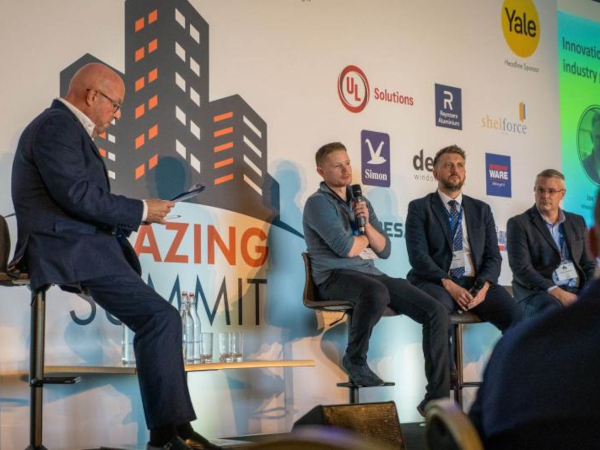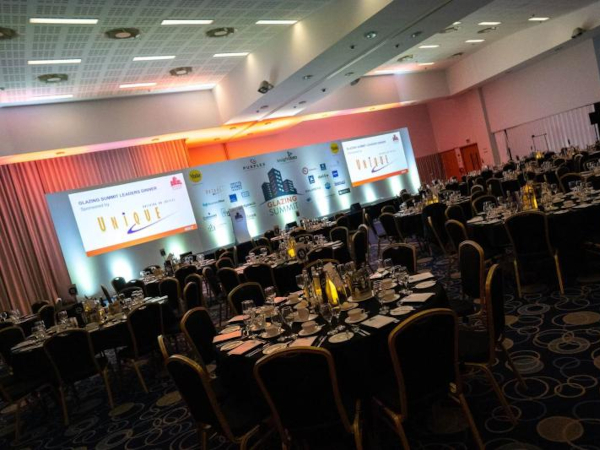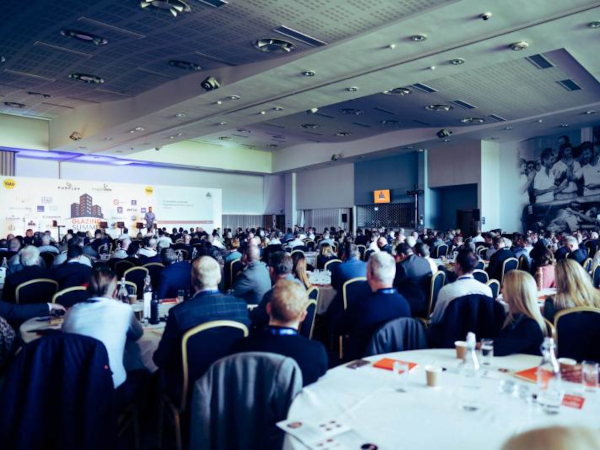Date: 19 August 2008
The investments will support the research and development of materials technologies that offer solutions to problems within the sector. The focus of the projects will be on the development of technologies and materials for energy generation, transmission & distribution, storage and conservation.
The projects, which have a total value in excess of £20 million, include research and development in areas such as:
- Energy efficient bio-based natural fibre insulation
- New materials and methods for energy efficient tidal turbines
- A new manufacturing process to produce a novel cellular vacuum insulation panel for retrofit into buildings, to reduce heat loss and energy
- Sustainable power cable materials technologies with improved whole life performance
(Details of most of the projects are listed in the Notes to Editors)
Supporting the Technology Strategy Board’s decision to invest in these projects, Science and Innovation Minister Ian Pearson said: “Sustainable energy supplies and the control of carbon dioxide emissions are major environmental challenges for the UK. Large scale investment, such as the ten million pounds announced today, will enable innovative materials technologies such as advanced building insulation and materials for energy efficient tidal turbines to be developed to meet the challenges we face in energy generation, conservation, storage and transmission.”
The Technology Strategy Board’s Director of Innovation Programmes, David Bott, added: “Through this support, the Technology Strategy Board is helping to bring together the UK’s world class expertise to research and develop innovative technologies in a key area for the UK. The technologies will bring enormous economic benefit in future, and will have global potential. We are delighted to offer our support and investment to these projects and look forward to some exciting work ahead.”
The funding of these projects is the latest investment in technology research and development by the Technology Strategy Board and follows their Autumn 2007 call for proposals in a number of innovation and technology areas. Announcements about further investments are likely to be made shortly.
Notes to Editors
1. The Technology Strategy Board’s Autumn 2007 call for R&D proposals covered eight technology areas: Cell Therapy, Materials for Energy, High Value Manufacturing, Low Carbon Energy Technologies, Advanced Lighting, Lasers & Displays, Technologies for Health, Gathering Data in Complex Environments and Creative Industries. These funding competitions were phased over 3 months. Announcements about the projects to be funded in each area are likely be made over the next 2/3 months.
2. The Technology Strategy Board is a business-led executive non-departmental public body, established by the government. Its role is to promote and support research into, and development and exploitation of, technology and innovation for the benefit of UK business, in order to increase economic growth and improve the quality of life. It is sponsored by the Department for Innovation, Universities and Skills (DIUS). For more information please visit www.innovateuk.org.
3. The Technology Strategy Board’s Collaborative Research and Development Programme is investing directly in new and emerging technologies and has been designed to help businesses work with each other or with academic partners to develop technologies that will underpin products and services of the future. Since 2004, the programme has supported about 700 projects across 40 technology areas with a combined business and government investment worth over £1 billion.
4. Details of projects currently available are:
Title: High rate, high energy batteries utilising structured electrode materials
Summary: The project aims to scale up structured cathode processes that will produce high rate, high energy batteries for use in hybrid diesel/gas/bio fuel powered electrical generation equipment.
Partners: QinetiQ Ltd (lead), ABSL Power Solutions Limited, The Boeing Company.
Title: Polymer Photovoltaic Architectural Glass
Summary: The objective is the development of low cost, translucent photovoltaic architectural glass based on conjugated organic polymers (OPV) for applications in building windows and curtain walling.
Partners: Polysolar Limited (lead), Linde Electronics, Imperial College, Sagentia Ltd, Pilkington Technology Management Limited.
Title: Energy efficient bio-based natural fibre insulation
Summary: The overall aim of this project is to develop a sustainable, thin and highly efficient natural fibre insulation solution, suitable for new build as well as offering a practical solution for the refurbishment market.
Partners: Bangor University (lead), Hemcore Ltd, Natural Building Technologies, Nonwovens Innovation and Research Institute Limited, Plant Fibre Technology Ltd, Rachel Bevan Architects and Consultants, SciTech Ltd, Wates Construction Ltd, University of East London
Title: Advanced Ceramic Matrix Composites for Energy Generating Gas Turbine Applications
Summary: The project will develop a high temperature oxide/oxide ceramic matrix composite (CMC) for use in power generating gas turbine applications. This will provide a step change in temperature capability enabling higher operating temperatures, improving engine efficiency and reducing CO2 emissions.
Partners: Rolls-Royce plc (lead), Advanced Composites Group, Swansea University, University of Birmingham.
Title: PURPOSE - Plastic UV Radiation Protection Operating by Stokes Emission
Summary: This project aims to develop novel energy harvesting products for a wide range of applications. This will be achieved by enhancing the properties of polymer composites; more efficient use of solar/thermal energy, longer life and recyclability.
Partners: Intrinsiq Materials Ltd (lead), Bayer Material Science, Brunel University, Johnson Matthey PLC
Title: New Materials and Methods for Energy Efficient Tidal Turbines NEW-MMEETT
Summary: This Project aims to optimise energy efficiency and return on investment by reducing the fatigue factors used for thick composite sections by developing tailor-made resins and using state-of-the-art aerospace technologies (modelling, testing, SHM) to design efficient tidal turbine blades.
Partners: Advanced Composites Group Limited (lead), Aviation Enterprises Ltd, Materials Engineering Research Laboratory Ltd, University of Bristol
Title: HEAT-SAVE: A new manufacturing process to produce a novel cellular vacuum insulation panel for retrofit into buildings to reduce heat loss and energy
Summary: Our aim is to develop a vacuum insulative panel for use in the construction industry by using a novel vacuum insulating foam sandwiched between enhanced layers of aircrete. The HeatSave project will allow UK builders to meet upcoming legislative demands for energy efficiency of buildings by developing an innovative product that is applicable to new and existing buildings.
Partners: H+H UK Limited (lead), Alchemie Ltd, Brandon Hire PLC, Explore Living PLC, Minett Group, Pera Innovation Ltd, UVASOL Ltd.
Title: Advanced Surface Protection to Enable Carbon Abatement Technologies (ASPECT)
Summary: The project is concerned with the development of coatings and application techniques for the protection of both the fireside and steamside surfaces of high temperature boiler components.
Partners: Doosan Babcock (lead), Cranfield University, E.ON UK plc, Monitor Coatings Limited, National Physical Laboratory, RWE npower, Sulzer Metco (UK) Ltd
Title: High-temperature Silicon Carbide Electronics (HITSIC)
Summary: This project aims to develop a new Silicon Carbide (SiC) materials process to realise high-temperature electronics (above 300 C with 450 C as target) for energy applications. The project will investigate Silicon Carbide (SiC) materials and processes for Complementary Metal Oxide Semiconductor (CMOS) structures; attempting to provide a unique design and manufacturing capability for high temperature SiC low-voltage electronics.
Partners: Raytheon Systems Limited (lead), University of Strathclyde.
Title: New homogeneous and novel cathode catalyst materials for liquid regenerating non-platinum PEM fuel cells
Summary: This project will deliver new non precious metal based chemical materials fit for purpose (including suitability for application and process scale up) for the cathode of liquid regenerating PEM type fuel cells.
Partners: ACAL Energy Ltd (lead), Newcastle University, Thomas Swan and Co. Ltd, University of Liverpool
Title: Nano-Engineered Catalyst Layers and Sub-Structures (NECLASS)
Summary: This project aims to design and develop novel fuel cell catalyst layers with a factor of two increase in platinum catalyst mass activity compared to current approaches. It will do this by nano-engineering the layer structures to overcome low utilisation of the catalyst on two scales.
Partners: Johnson Matthey Fuel Cells Ltd (lead), Qudos Technology Ltd, Teer Coatings Limited, Thomas Swan and Co. Ltd.
Title: Low cost integrated PV in double glazed windows using CdTe bifacial solar cells
Summary: It is proposed to develop a novel low cost photovoltaic (PV) double glazed window concept based on a semi-transparent bifacial Cadmium Telluride (CdTe) ultra-thin film solar cell.
Partners: Arup (Lead), Pilkington Group, CREST (Centre for Renewable Energy Systems Technology, Loughborough University), Applied Multilayers
Issued by
Nick Sheppard
Media Relations Manager
Technology Strategy Board
Block B, North Star House
North Star Avenue
Swindon, SN2 1JF
Switch: +44 (0)1793 442700
Direct: +44 (0)1793 442772
Mobile: +44 (0)7824 599644
e-mail: nick.sheppard@tsb.gov.uk







Add new comment